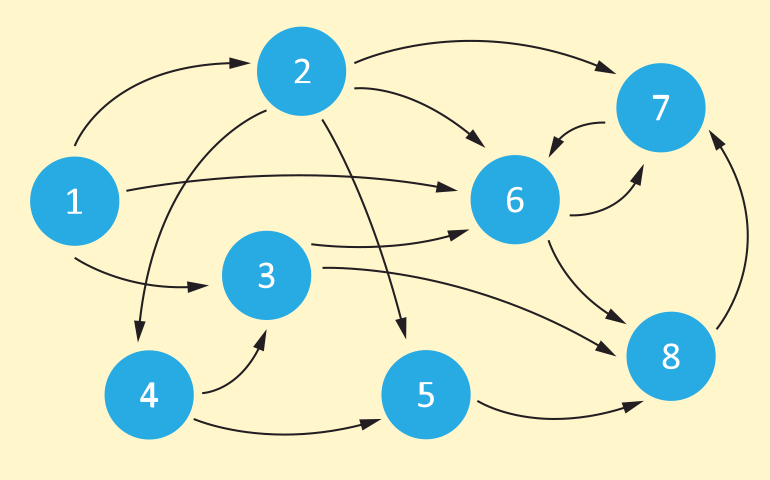How to Retain Customers

Recent Posts
How to Optimize NAP for Local SEO? Why You Should Automate Everyday Business Tasks Cheapest Web Hosting For Developers: Requirements And Considerations GPU Dedicated Server For High-Traffic Websites: Scaling And Performance How Blockchain is Revolutionizing Cross-Border Payments in Fintech Entertainment Beyond the Arena: Creative WWE Fan Experiences Boosting Restaurant Revenue: Integrating Online Ordering Systems A Guide to Visiting the Molokini Crater Tapping into the Potential: Why Forex Needs a Stronger Presence in Facebook Advertising B2B Marketing: The Ultimate Guide to Driving Business Growth in 2024 Creating a Personal Statement for Digital Marketing and Online Advertising Careers Achieving First-Page Rankings: Expert SEO Promotion TipsThe best way to grow your business, revenue, and sales is to not lose your customers.
In 2017, Forbes published an article stating that $62 billion in business was lost due to poor customer service. For the average business, it was also reported that 10 to 25% of customers are lost every year.
Perhaps there are some new customers who replace the old, however, the potential for repeat business will have your business spending time and money attracting more.
In today’s post, let’s discuss how to retain customers.
Why is Customer Retention Important?
400;”>Customer retention is the activities and actions your business must take to increase the number of repeat customers as well as to increase the profitability of existing customers.
We focus on direct response and customer acquisition in e-commerce, lead gen, and mobile. When it comes to results and leads, we speak your language.
If left ignored, you may want to consider how much you are spending on customer attribution. Customer attribution includes all marketing, advertising, and other related costs used to attract and convert customers to your business.
Even though customer acquisition is the fundamental approach to building your business, having an effective customer retention strategy is going to maximize your revenue over time.
Here are a few ideas to help you retain customers.
- Minimize Attrition
Many businesses spend significant time, effort, and money building the initial customer relationship. However, very few use that same time, effort, and money to measure or recognize how and when their customers become inactive.
If relationships are left unattended, customers may start to lose interest, consider competitors, and abandon your business altogether. If you can tap into the reasons why customers are leaving your business, you can focus on delivering longer customer experiences that drive long-term revenue gains.
- Implement Support Systems
You need a comprehensive support system. This could be a FAQs page, product manuals, educational video series, live chats on websites, and more. If your customers don’t have easy-to-access support whenever a problem arises or a question comes to mind, they’re probably going to get out.
Be sure to establish your support systems from the get-go. You should have a clear idea as to what the objections and questions your customer might have. These can be addressed in advance on your website. Additionally, try to provide omnichannel support using apps like Trengo for a seamless experience.
Meanwhile, for spur-of-the-moment problems that occur unnoticed, set up a support plan that addresses the issue and responds as promptly as possible. In these circumstances, over-communicate that you’re going to get back to your customer to help them soon.
- Survey Your Customers
Tap into your customer base and figure out their thoughts and feelings for what you offer. Send them a survey to capture their feedback and identify at-risk customers before they leave.
As Philip Libin, CEO of Evernote, says:
“Complaints are great… they tell us where our product or overall experience is failing.”
Use the information from your survey to assign sales or support teams to follow up with those sending poor ratings. Send emails letting them know of coming updates, offer a promo code or discount, or send them a personalized note that lets them know you care.
If you see positive ratings in your survey, reach out to those customers too. Encourage them to join your VIP programs or offer them exclusive discounts.
Create surveys that are between 1 to 3 questions, ideally embedded in an email, to minimize customers from wasting time bouncing to different places to submit their forms.
- Measure Lifetime Value
Do you know the average amount of money a customer will spend at your business? Customer lifetime values is a metric you can use to understand when, where, and why customers interact, engage, and spend with your business.

To calculate your lifetime value, take the average order total multiplied by the average number of purchases in a year multiplied by average retention in years.
This will give an average lifetime value of your customers based on real data. It offers you a data point you can use for customer segmentation, targeting customers to extend their lifetime, and strategies to implement promotional efforts.
How can you surprise your customers with gifts and perks they didn’t see coming? If you want to build loyalty and delight, this is the way to do it.
For example, if you are a Sephora Beauty Insider, you can receive a free gift on your birthday. These customers get to choose between a skincare package, a beauty makeup bundle or, for those in the upper subscription levels, the choice of 250 bonus points.
When you are capturing your customer data, you can request their birthdays and implement this into a CRM program to automate the process of sending birthday surprises.
Other ideas to surprise your customers:
- After a customer buys 3 pairs of shoes from their shop, send them a complimentary pair of funky, cool socks.
- If a customer spends $500+ with your business, send them a hand-written note or a postcard from you or your sales team.
These types of unexpected displays of appreciation o a long way to build stronger customer relationships and positive customer experience while minimizing the rate of attrition.
Quick Tip: Hex built a thriving business by sending over 13,000 thank you letters to their customers. Try sending thank you and goodbye letters to your customers.
Conclusion
Keeping existing customers is a lot easier than attracting new customer to your business. By now, you should have some new ideas to improve your customer loyalty and to encourage soon-to-disappear customers to reengage with your products, services, and offers.
Customer retention is a critical component for the sustainability and profitability of your business. It helps keep you engaged with your customer base and provides you with raw data to extend customer lifetime value.
Focus on finding specific reasons why customers are leaving your business and use this as a starting point to improve relationships. You can social media marketing, advertisements, customer loyalty programs, and more to make a better customer experience for all.
Question: What customer retention strategies have you used that worked with your business?

 Image Source
Image Source